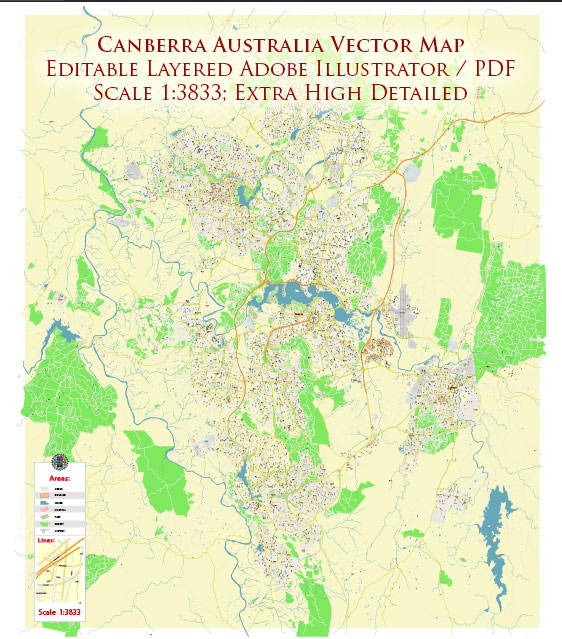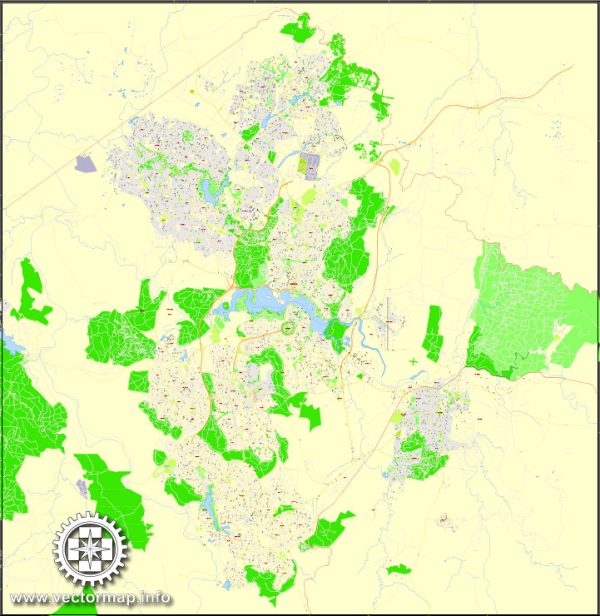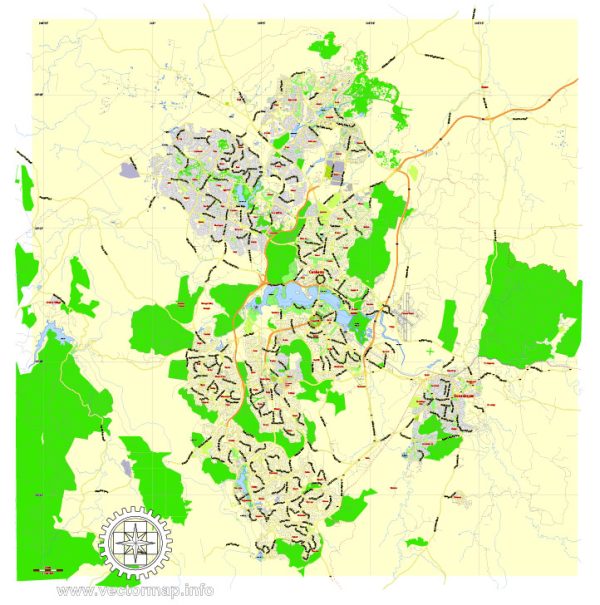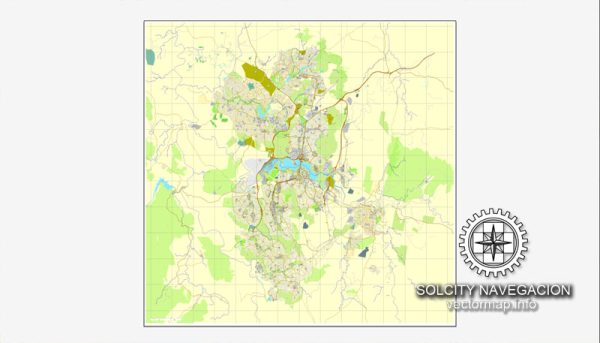A general overview of the economic and transportation aspects of Canberra, Australia.
Vectormap.Net provide you with the most accurate and up-to-date vector maps in Adobe Illustrator, PDF and other formats, designed for editing and printing. Please read the vector map descriptions carefully.
- Government Sector Dominance:
- Canberra is the capital city of Australia, and its economy is heavily influenced by the presence of the Australian government. A significant portion of the workforce is employed in public administration, defense, and related sectors.
- Public Administration and Services:
- The city is home to various government agencies, departments, and international diplomatic missions. Public administration and related services contribute significantly to the local economy.
- Education and Research:
- Canberra hosts several universities and research institutions, contributing to the education and research sector’s economic impact. Institutions like the Australian National University (ANU) are well-regarded globally.
- Technology and Innovation:
- Canberra has a growing technology sector with a focus on innovation. The presence of government agencies and research institutions fosters collaboration and the development of technology-related industries.
- Tourism:
- The city attracts tourists with its cultural institutions, national monuments, and events. Popular attractions include the Australian War Memorial, Parliament House, and the National Gallery of Australia.
- Real Estate:
- Real estate plays a crucial role in Canberra’s economy, with demand driven by the presence of government employees, students, and professionals.
Transportation Overview:
- Road Network:
- Canberra has a well-planned road network, with major arterial roads connecting different parts of the city. The road system is designed to minimize traffic congestion.
- Public Transport:
- ACTION buses operate the public transportation system in Canberra, covering various routes across the city and surrounding suburbs. The bus network is integral for daily commuting.
- Cycling Infrastructure:
- Canberra is known for its extensive cycling paths and dedicated bike lanes, promoting sustainable and eco-friendly transportation.
- Airport:
- Canberra Airport serves as the main air transportation hub. It provides domestic and limited international flights, connecting the city to major Australian cities.
- Rail Transport:
- While Canberra doesn’t have a major railway station, there are coach services and rail connections available to and from nearby cities like Sydney.
- Car Ownership:
- Car ownership is common in Canberra, given the spread-out nature of the city. However, efforts are made to encourage public transportation and reduce traffic congestion.
- Future Developments:
- The city continually invests in infrastructure projects to enhance transportation and connectivity. This includes upgrades to roads, public transport, and consideration of potential light rail projects.
It’s advisable to check for the latest information, as economic and transportation landscapes can evolve over time.





 Author: Kirill Shrayber, Ph.D.
Author: Kirill Shrayber, Ph.D.